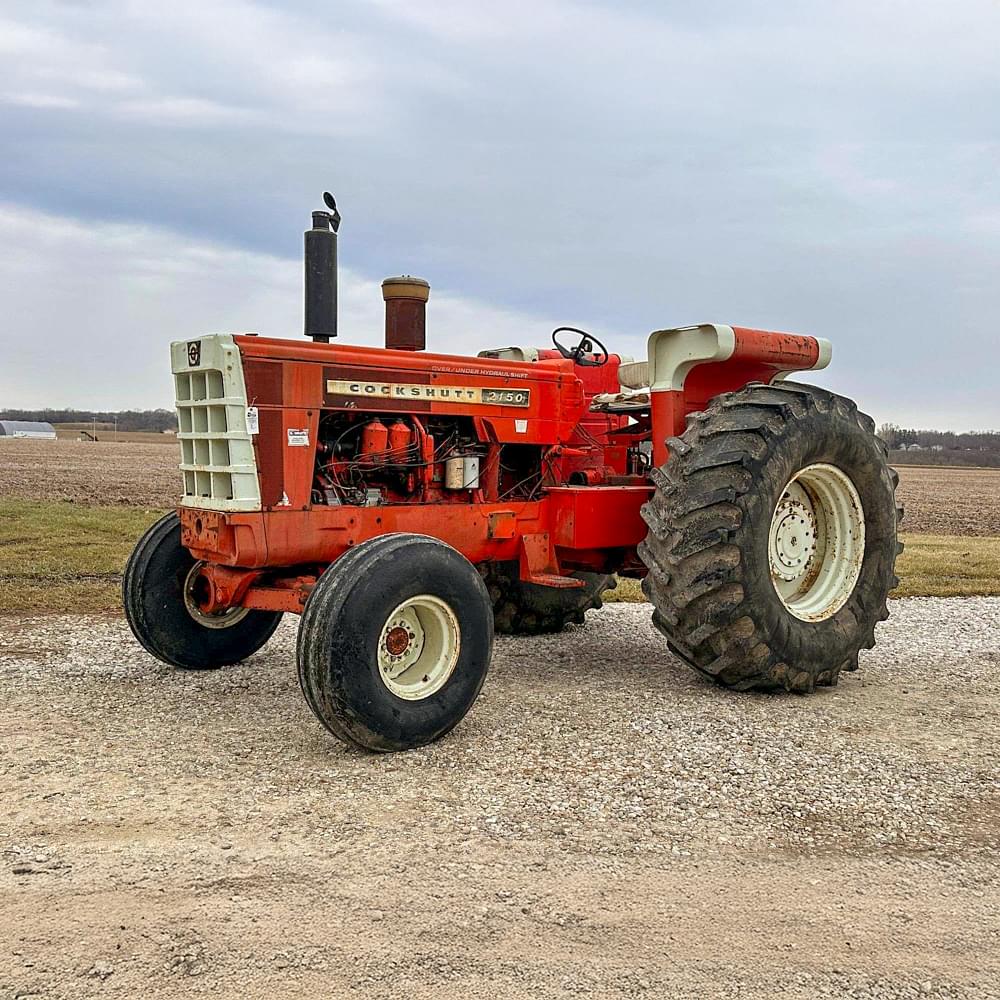INTERESTING IRON
Cockshutt 2150: Speak softly and carry a big stick
Ryan Roossinck
February 13, 2025
Before we get started: The Oliver 2150 and the Cockshutt 2150 are essentially identical save for the paint and decals, so I refer to them somewhat interchangeably.
Cockshutt 2150 listings on Tractor Zoom
The mid-60s was an interesting time in our agricultural history. North America’s farming landscape grew heavily and farming practices were innovating right along with it. This drove demand for more capable equipment. Farmers needed tractors that could efficiently hustle through heavy tillage with a 6 or 7-bottom plow…and they didn’t want to have their eardrums blown out in the process. Tractor manufacturers scrambled to build bigger and more powerful machines, which resulted in something of a golden age of tractors with the horsepower wars of the late 60s into the 70s. For the most part, everybody was chasing Deere or Harvester. However, White Motor Co., the parent company of Oliver, Cockshutt, and Minneapolis-Moline, had a plan to disrupt the market a little.
The 2150
White wasn’t content to remain at the back of the pack as far as horsepower was concerned. At the time, the most powerful machine in the Oliver lineup was the 1950 or 1950T, which was only good for about 105 horse on the PTO. They could see that the new battleground was going to be in the 120-130 horse category, and quite frankly, they didn’t have an option that would compete with that.
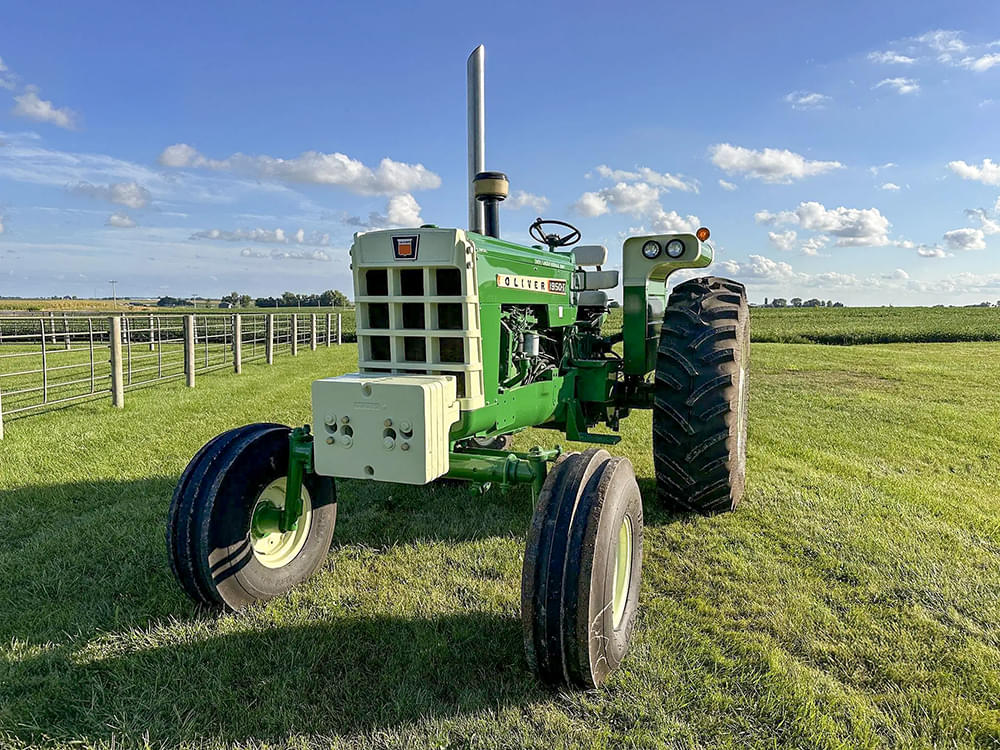
Fortunately, they had a plan for that, and they started developing a big, beefy chassis. Now they needed a powerplant for it…
Ultimately, they found that in Canton, OH. Hercules had developed a very stout multi-fuel engine for the military, and it had been in production for long enough to work the bugs out. After some discussion with Hercules about the feasibility of a diesel-only version, it seemed like a logical way to move forward, so White bought the company. It was a smart move, because it allowed them to have an engine ready for the 2150 (and its naturally aspirated little brother, the 2050) in fairly short order.
Strong & Powerful: A Winning combo?
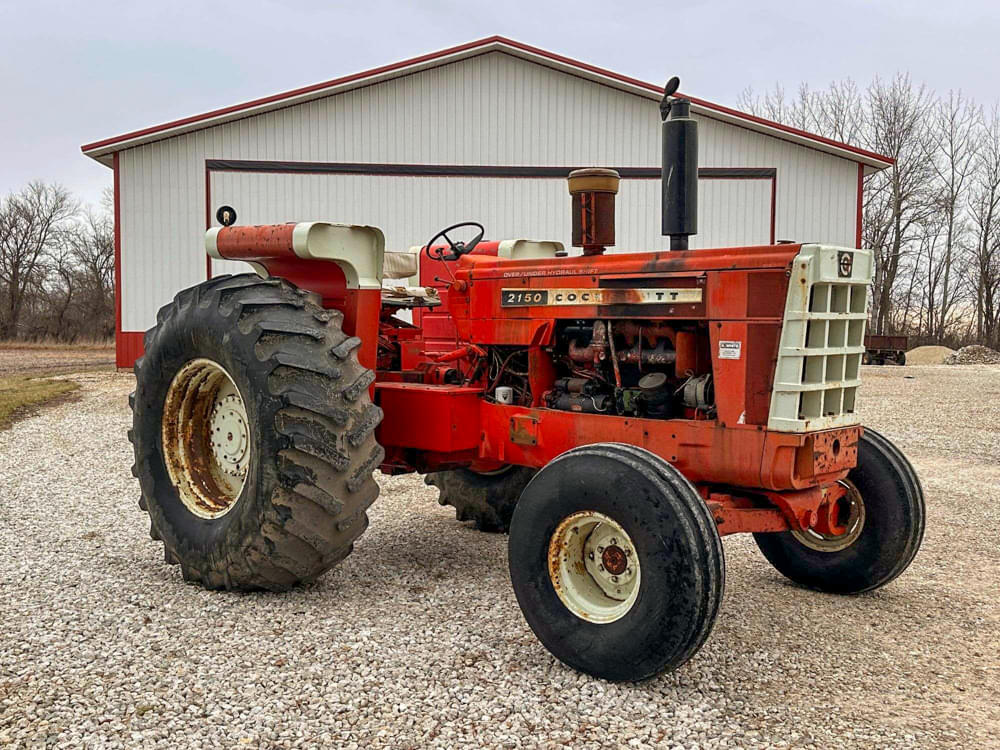
When it went into production for the 1968 model year, the 2150 had all the right stuff. Big power and torque, multiple transmission options (most were the 18-speed Over/Under Hydraul-Shift), good hydraulics, and a beefy, overbuilt chassis so operators didn’t lose traction in the field! Furthermore, planetaries lessened the torque on the axles, which helped keep the driveline happy. The icing on the cake? It was a fairly quiet engine thanks to a unique combustion chamber developed by M.A.N. that lessened cylinder pressure, leading to less emissions and noise. Oliver marketed the 2050 and 2150 as “The Whispering Giants”!
“Ain’t here for a long time…”
To take a page from George Strait’s book, the 2150 wasn’t in production for a long time, but while it was (April ’68 through June ’69), it was here for a good time! The big flagship tractor turned 131.48 horsepower on the Nebraska Lab’s dyno, which basically put it at the top of the class. They were big, tough, heavy machines that were built for business. They didn’t make a ton of these machines, either; they’re definitely not very common today.
Production breakdown
Total built: 1018 (645 2WD/373 FWA)
-
- Oliver 2150: 887
- Oliver/White 4-144 (including 4-144 Extra Heavy Duty models): 19
- Cockshutt 2150: 112
Now wait just a second here, Interesting Iron-guy…if these things were such ripsnortin’ monsters, why were they only in production for 14 months? What gives?
Glad you asked. There’s a reason. Sadly, it’s not a good one.
Collateral damage
The Oliver and Cockshutt 2150 were collateral damage. See, White Motor Co. had been working towards consolidating brands all throughout the 60s. Oliver and Cockshutt models had been identical under the skin for quite a few years. Minneapolis-Moline, on the other hand, had been operating more or less independently since they’d been acquired. However, when White moved all of the brands under a single umbrella – White Farm Equipment Co. – things got real political amongst the different departments. Grabbing hands started grabbing for all the power they could, and when it came to product development, Minneapolis-Moline ended up having quite a bit of the influence. At the end of the day, that infighting and squabbling over who ruled the roost resulted in some really good tractors getting the axe…namely, the 2050 and the 2150.
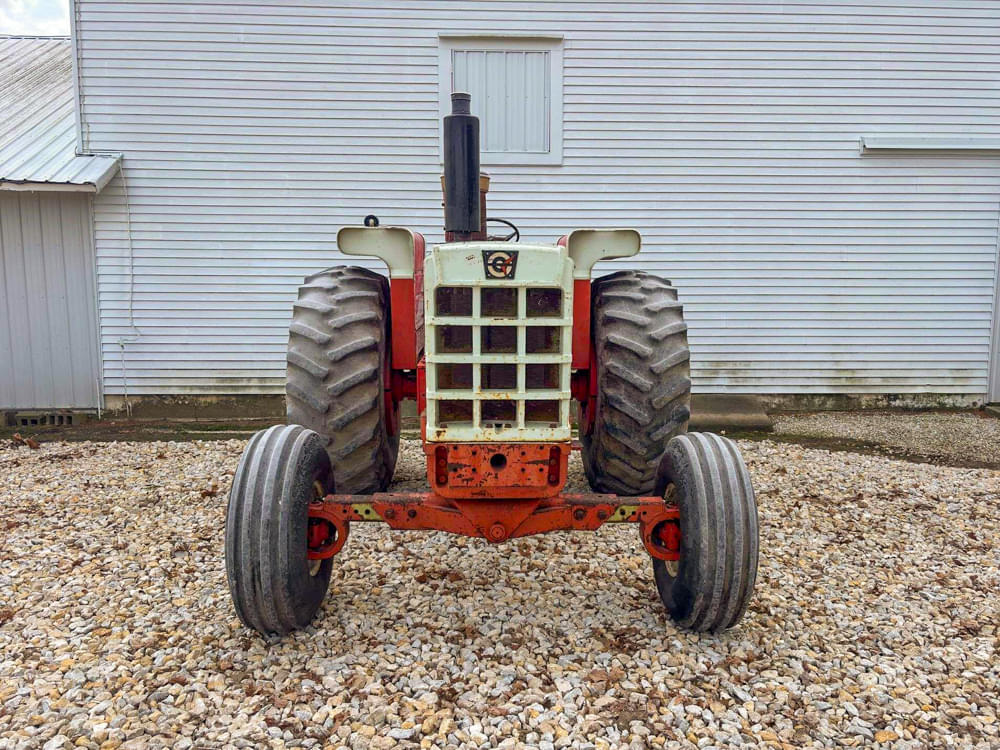
After it was all said and done, White Farm Equipment Co. chose to mate Moline’s powerplants with Oliver’s driveline. They continued to use brand colors, but under the hood, the Minneapolis-Moline G1355, Oliver 2155, and White 2270 (painted Cockshutt red) were all the same. The brand colors would all eventually be phased out a few years later.
Still, while the Oliver and Cockshutt 2150 tractors had a short run, it was fixin’ to be a pretty good one! Incidentally, White wasn’t done with the 478 Herc. It went back into production when the 2-135 and 2-155 came around in 1975/1976 and they were an absolute powerhouse in those tractors!
So what about the tractor in the photos?
The one you can buy on March 13th
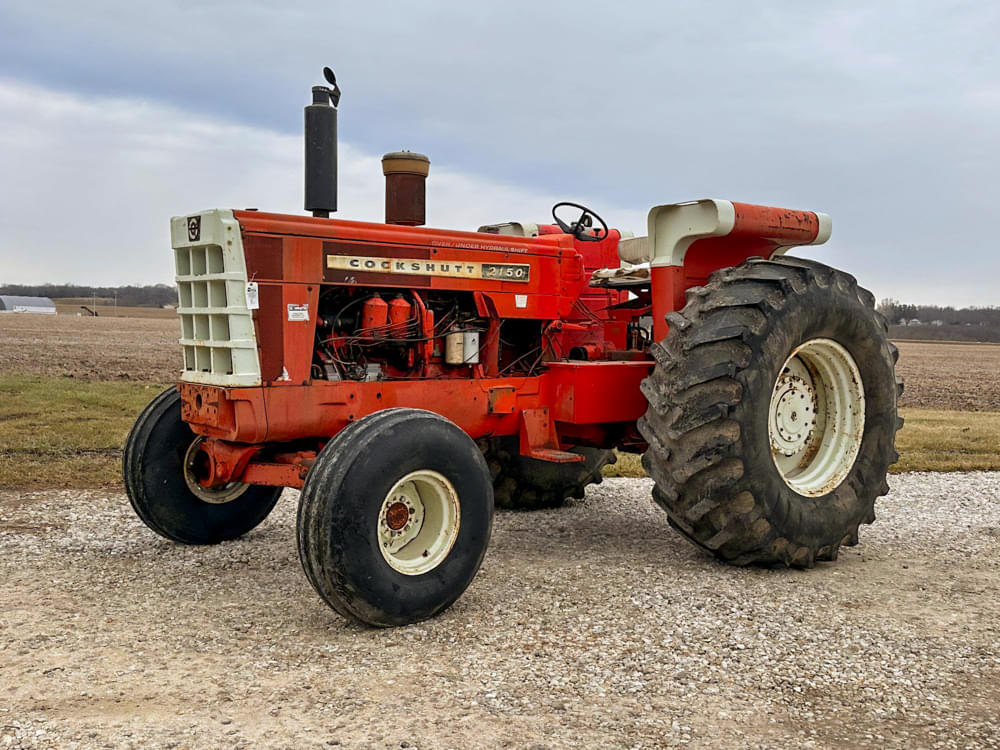
I didn’t have the chance to talk to Kurt Aumann about this particular tractor, but I can tell you that it’s had a good home in a fairly sizeable Oliver collection in southeast Iowa. Cockshutts were sold to the Canadian market, and this one still has a dealer decal on it. I believe it’s a fairly original Wheatland tractor, as it’s got a wide-swing drawbar and no 3-point. And as with most of the Wheatland tractors, this one is optioned with the 39-gallon auxiliary fuel tanks (which I think are pretty cool). This one left the factory in Charles City with a cab, which is why it doesn’t have any factory-mounted lights in the fenders. It shows a bit over 5200 hours on the meter, which may or may not be original (I tend to think it is, but that’s just my opinion).
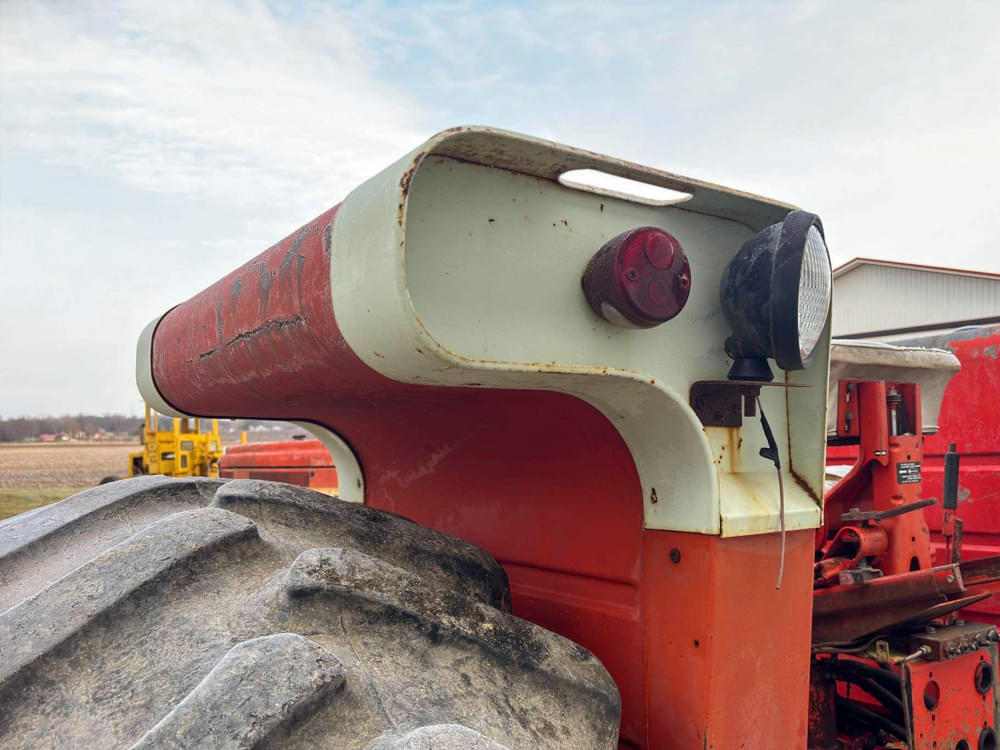
Overall, it’s a really neat tractor that’s fairly rare. You could go to a year’s worth of antique tractor shows and never run across one of these babies!
What’ll it bring?
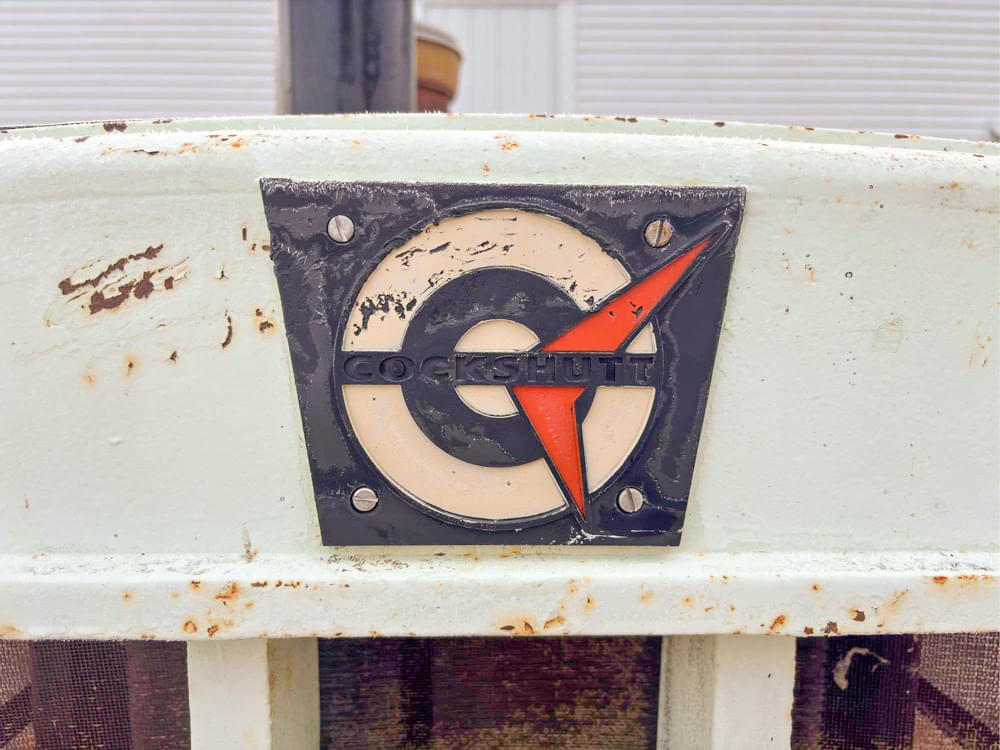
Oliver 2150s are fairly hard to find on their own. Cockshutt 2150s are quite a bit harder; I’ve only ever seen one in person. With just 112 built, and being a pretty desirable model amongst the Oliver faithful, I think it’ll do pretty well.
Now, that said, that’s just the opinion of a tractor nerd.
However, our Tractor Zoom Pro database that tracks auction results can give us a baseline to look at. There’s only one Cockshutt 2150 in our database, and that one was a FWA model that brought $17,800 in November 2023. So, while that’s not an awful lot of help, we’ve got 14 on the Oliver side, 11 of which are 2WD. Of those tractors, there are seven sales that I would consider to be comparable over the past few years. The auction average for those tractors sits at about $11,500. Will this one outpace them? Perhaps. Commodity prices and such could impact the bidding, but I doubt it’ll make a significant difference in the outcome.
The bid currently sits at $6900 as of February 12th but the auction doesn’t close for another month, so I suspect it won’t have a hard time getting past $11,500. If you were to put the screws to me, I’d give you an educated guess that it gets to $15,000 or maybe a touch more on account of the originality. If the cab was still on it, perhaps a couple thousand more.
Either way, though, it’ll be neat to see where this one ends up. It’s a really cool tractor and they definitely don’t show up on the market all that frequently.
Wrapping up…
Like lots of other folks, I often wonder what would’ve happened if some of these short-run models would’ve had a better chance, or hadn’t been a victim of circumstance like the 2150 was. I try not to take sides on stuff like this, but my opinion is that these tractors never really got a fair shot. I think they had the right stuff to compete with tractors like the 1456 and 5020. In the long run, though, White had their strategic plan and despite some collateral damage while they got there, it still worked out okay. Even if the 2150 had been more successful, I don’t think it would’ve had a significant effect on the long-term plan. The brands still would’ve ended up consolidating in the end, and that’s okay.
If you’re a bidder on this one, best of luck! If you end up taking it home, I’d love to hear what you’re going to do with it! Regardless, make it a great week! To quote my good friend Tyler, “Go drag something outta the weeds and get it running again!”
Oliver & Cockshutt tractors on Tractor Zoom
*Shoutout to my good friends Sherry Schaefer and the team over at Oliver Heritage magazine for a little help on the production numbers breakdown. If you’re a fan of Interesting Iron, you’ll love Oliver Heritage! Give ’em a shout!

